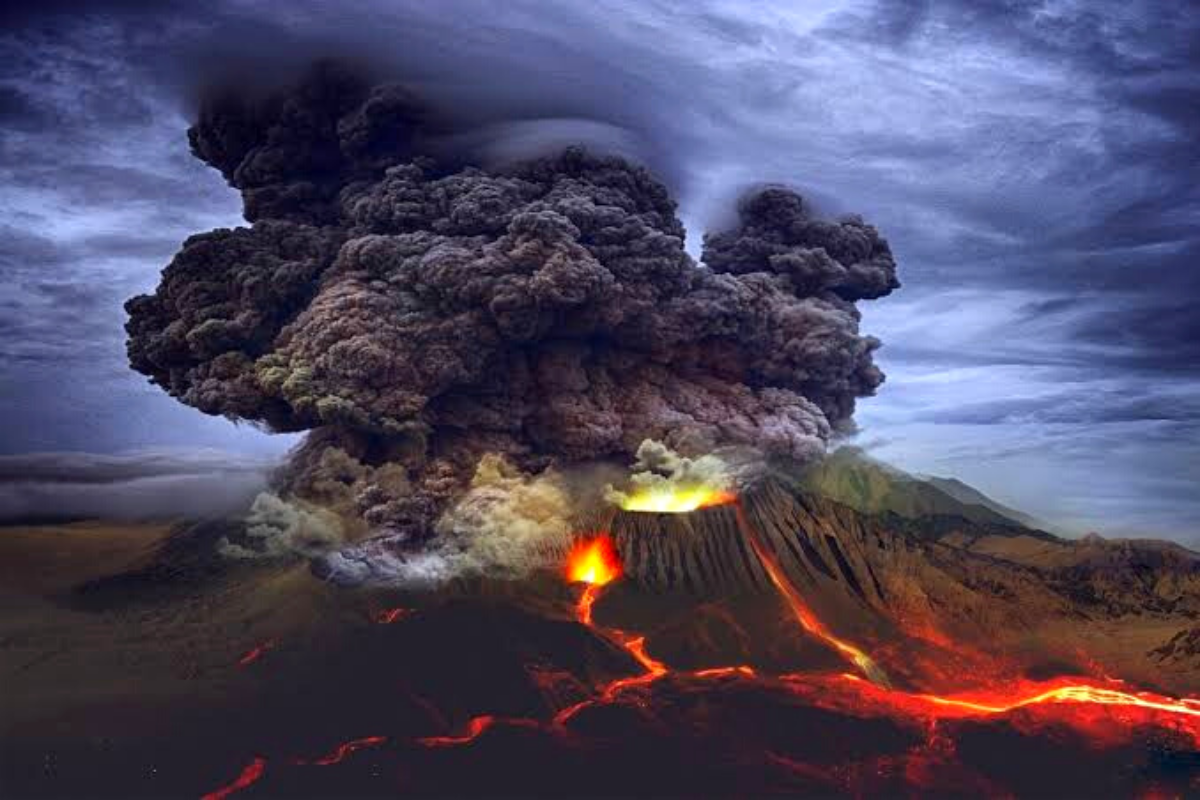
Round. Circular. Endless. Symbol of fidelity. These are words synonymous with a ring. And we also know of the phrase “ring of fire.” So, what imagery does it invoke in our minds when we hear this term?
Ring of fire is both a term and a reality. Our planet has terrains of active volcanoes, which create a circular formation around the globe, akin to a ring. Indonesia sits atop this formation in the Pacific region.
According to The Statesman, this precise geographical location puts Indonesia as one of the most vulnerable nations in terms of natural disasters. Most earthquakes and 75% of volcanic activity are found in the regions surrounding the ring of fire.
It is not uncommon for Indonesians to read and hear, or even directly observe volcanic activities. The most recent being Mount Semeru. On Saturday, December 4, 2021, Mount Semeru in East Java province erupted.
The eruption occurred without observable warning signs and greatly impacted the surrounding communities. The volcanic matter that erupted from Mount Semeru produced a massive lava flow and an effluxion of volcanic ash, engulfing nearby villages.
A significant amount of infrastructure has been destroyed in the Lumajang regency. The Indonesian National Board for Disaster Management (BNPB) has announced that 14 lives have been lost and as many as 1,300 people have been displaced and are now taking refuge in shelter camps.
Embracing Fragility
Apart from mitigative effort and technological advancement in anticipating disasters, nature once again displayed proof that there are things beyond the reach and control of man.
Goenawan Mohamad, a famous Indonesian writer penned a short essay titled “Fragile,” expounding on the fragility and inability of man in the face of natural disasters. And he could not be more right. The astounding achievement of man in all directions of invention does not lessen the reality that creation is greatly enshrouded with fragility.
As one philosopher related once, “We know not what to do with our fragility, but to conceal it or pretend it never existed.” This statement is worthy of our reflection, as well as acknowledgement of our fragility. In turn, it beseeches us to turn to our Creator with full surrender.
The God-Focus
In Psalm 90, we find Moses’ prayer inspired by the Spirit. This prayer leads our attention to God – the everlasting One – and humans are fragile beings, Moses being one.
Humans will surely find that in time their lives will wither just as grass in the meadow would. Nevertheless, God will prevail. He remains the same from age to age, and generations upon generations will learn the truth that God is the same throughout.
In the first 12 verses, this chapter reveals the truth about God’s eternal nature (90:1-2), man’s frailty (90:3-8), and man’s fleeting existence (90:9-12). Verses 3 and 4 aptly state that we are but frail creations.
"You turn people back to dust,
saying, 'Return to dust, you mortals.'
A thousand years in your sight
are like a day that has just gone by,
or like a watch in the night."
The word “dust” (verse 3) in Hebrew is translated that, in God’s design, our bodies will eventually turn back into dust. And is this not proven so?
We are easily reminded of this truth when the news reports numerous casualties due to natural disasters. Memorial services remind us of our mortality. Everyone dies eventually. People we know, popular public figures, everyone.
In Psalm 90:4, we learn of our mortal nature in direct contrast to God’s immortal essence. God is neither bound to mortality nor to the constraints of time and space. While, the life of humans passes by in sleep just like a dream, swiftly gone with the rising of the sun.
Immanuel – Our Safe Haven
A Biblical scholar once commented that the life of man is more similar to the soft grass growing underneath, not that of a giant tree. “We may boast of our good health, strong physique, and long life. But the truth is that our active and energetic bodies will one day wither, and we will eventually lie in cold and stillness,” he wrote. And he was right. Just as Moses was right. Our strength, voice, and physical beauty will one day fade away.
Despite the bitter truth of life and disasters, we are given a buoy to hang on to – our God will embrace us in His arms. God understands that we are anything but fragile.
God knew of this fragility first-hand as Christ transcended into a frail child laid in the manger. He did not attempt to manifest Himself into something greater than man to impress them – despite His greatness.
The awe-inspiring, great God took the form of a helpless child to be one of mankind – to be among us. He came down in the midst of chaos and disaster to lead humankind to a safe haven that is, God Himself.
Life in the midst of the ring of fire has added to the long list of our imminent difficulties. We may never know when disaster will strike, but holding on to the promise that our Immanuel God will be with us, we shall have the courage to face what may come, in fearlessness.
The Sovereign God Reigns
We can learn lessons from advanced countries. They mitigate disasters while keeping faith that God reigns over the universe and all its workings.
Disaster has wreaked havoc and caused the loss of lives of our fellow countrymen in Lumajang, East Java at this time particularly. As humanity shares the same frailty, we are called to lend a hand to those who suffer from the Semeru eruption and many other similar natural disasters.
We need to support each other in our own capacity, be it food, clothing, manpower, or support of any kind. At the same time, we are also reminded of our fragile nature as humans and our need to cling to God revealed through the Lord Jesus Christ.
Photo taken from Maxpixel.net